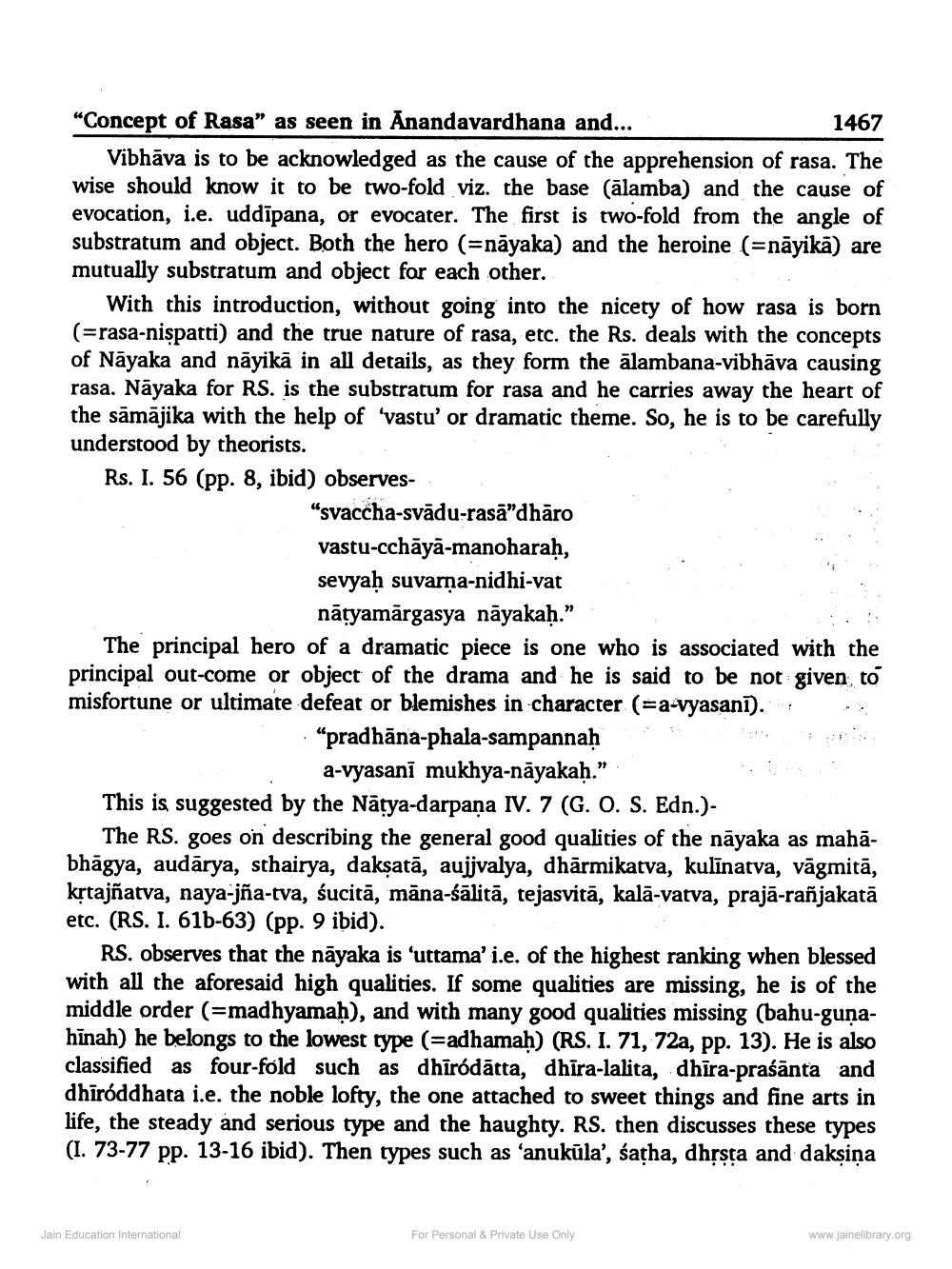________________
"Concept of Rasa” as seen in Anandavardhana and...
1467 Vibhāva is to be acknowledged as the cause of the apprehension of rasa. The wise should know it to be two-fold viz. the base (ālamba) and the cause of evocation, i.e. uddīpana, or evocater. The first is two-fold from the angle of substratum and object. Both the hero (=nāyaka) and the heroine (=nāyikā) are mutually substratum and object for each other.
With this introduction, without going into the nicety of how rasa is born (=rasa-nispatti) and the true nature of rasa, etc. the Rs. deals with the concepts of Nāyaka and nāyikā in all details, as they form the alambana-vibhāva causing rasa. Nāyaka for RS. is the substratum for rasa and he carries away the heart of the sāmājika with the help of 'vastu' or dramatic theme. So, he is to be carefully understood by theorists. Rs. I. 56 (pp. 8, ibid) observes
"svaccha-svādu-rasā”dhāro vastu-cchāyā-manoharaḥ, sevyaḥ suvarna-nidhi-vat
nātyamārgasya nāyakaḥ.” The principal hero of a dramatic piece is one who is associated with the principal out-come or object of the drama and he is said to be not given to misfortune or ultimate defeat or blemishes in character (=a-vyasani).
“pradhāna-phala-sampannaḥ
a-vyasani mukhya-nāyakaḥ." This is suggested by the Nātya-darpaņa IV. 7 (G. O. S. Edn.).
The RS. goes on describing the general good qualities of the nāyaka as mahābhāgya, audārya, sthairya, daksatā, aujjvalya, dhārmikatva, kulīnarva, vāgmitā, krtajñatva, naya-jña-tva, sucitā, māna-śālitā, tejasvitā, kalā-varva, prajā-rañjakatā etc. (RS. I. 616-63) (pp. 9 ibid).
RS. observes that the nāyaka is ‘uttama' i.e. of the highest ranking when blessed with all the aforesaid high qualities. If some qualities are missing, he is of the middle order (=madhyamah), and with many good qualities missing (bahu-gunahinah) he belongs to the lowest type (=adhamaḥ) (RS. I. 71, 72a, pp. 13). He is also classified as four-fold such as dhīródātta, dhira-lalita, dhīra-praśānta and dhīróddhata i.e. the noble lofty, the one attached to sweet things and fine arts in life, the steady and serious type and the haughty. RS. then discusses these types (I. 73-77 pp. 13-16 ibid). Then types such as 'anukūla', satha, dhrsta and daksina
Jain Education International
For Personal & Private Use Only
www.jainelibrary.org




